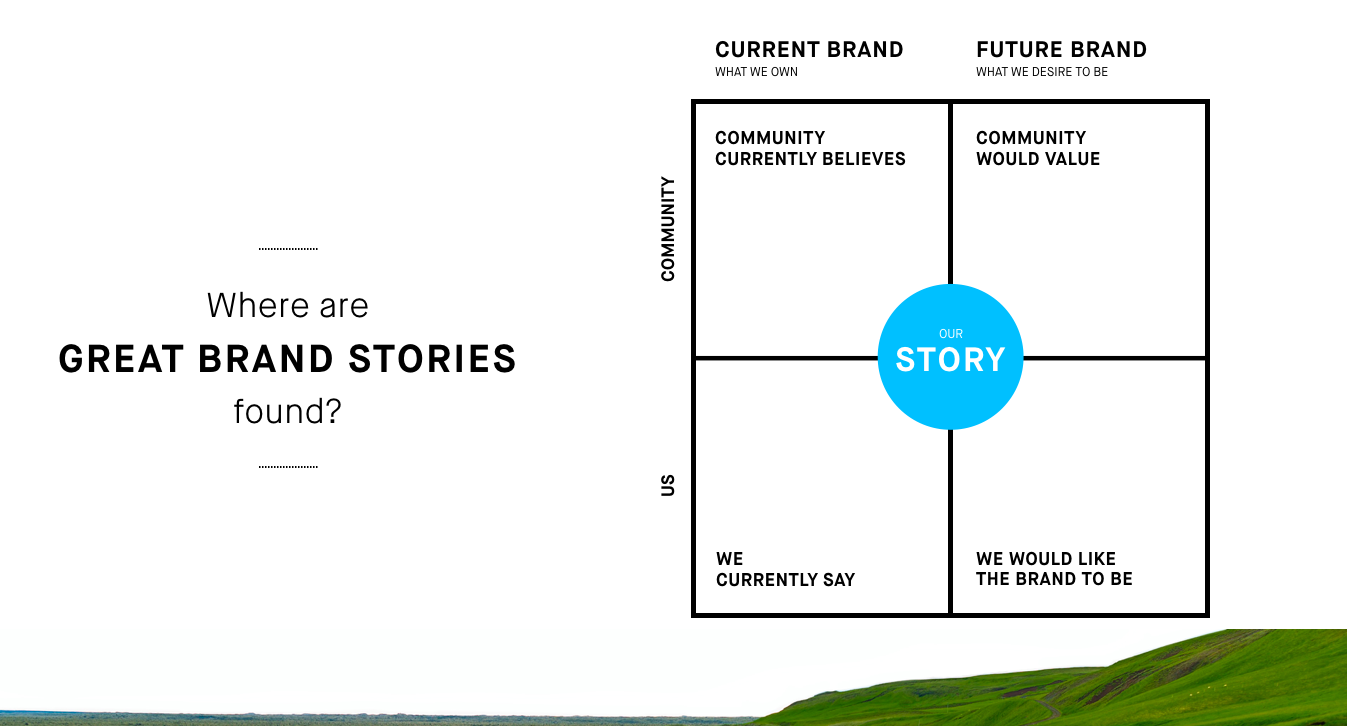4 brand research tips to help you connect with your audience
You may think your marketing messages are telling a clear story. The only way to know for sure is to ask your audience.
You know that it’s essential to base your branding decisions on a solid foundation of data. But when deadlines are tight and everyone is asking for next quarter’s marketing strategy to be done yesterday, it can be tempting to skip to the answer on a hunch.
We’ve seen enough products flop and marketing campaigns fail because marketers didn’t understand the people they were creating for or speaking to. In the words of branding guru Michael Johnson in his book, Branding in Five and a Half Steps, “Before you go anywhere, work out where you are first, where you could be, and whether you are strategically capable of getting there.”
A story-driven approach to research:
One of the keys to our approach is asking plenty of open-response questions—so you can collect stories and brand associations in your customers’ own words. But analyzing the data you receive from qualitative research like this can seem like a daunting task. You’ll probably end up with a spreadsheet full of long responses that you need to read and categorize. The worst that could happen is that you get totally overwhelmed by your data. You take one look at your spreadsheet and close it forever in a fit of panic. Without a few tools and techniques to analyze your data, the gold hidden within will never be brought to light.
Use open-response questions to collect stories and brand associations in your customers’ own words.
Before you start your analysis process, keep in mind your goal for this research. What are your learning objectives? What will you build with this data? For many of our projects, our ultimate goal is to craft a clear positioning platform and brand story for our clients. We structure our research process to fill in each section within our brand box tool.

Use the brand box framework to guide your brand research, and tell a compelling, insights-driven story.
Your most authentic and powerful brand story has a foot in each box. Root your brand in your current strengths to extend it into the future.
While it’s important to report what your community said as accurately as possible, don’t stress over perfect analysis. You might not have been able to collect as much survey or interview data as you would have liked. Work with what you have and learn what you can. We think of the research process as part science, part art. Approach your findings with curiosity. Let the data speak to you. And then make data collection an ongoing part of your process.
What to look for in your data:
Your research results are full of inspiration for creating brand messages that speak clearly to your target customers. Here’s what to look for:
1. Themes and key examples for each question you asked
When we conduct research for our clients, we thoroughly read all the responses to each question we asked, searching for common words and themes. We use a search formula in a spreadsheet like Excel or Numbers to find common words as a starting point. Further reading helps us categorize the responses into themes. We typically present to our clients the top four themes for each survey question with examples to support each one.
2. Overall themes that appear as threads through multiple questions
After you finish analyzing the key themes for each question, you’ll start to see larger trends appear in the data. Test your themes in the context of the brand box. Look for themes that help you better understand how your brand is different from competitors—and how your brand community is giving you permission to grow in the future. These insights are often the raw materials for your brand differentiators at the core of your positioning strategy.
3. Gaps between what your internal and external communities believe
If you asked your internal community (employees, investors, board members) and your external community (customers, partners) a similar set of survey and interview questions, it’s easy to see where their perceptions are aligned, and where they differ. Also, explore where internal and external sentiment about the brand might be different.
4. Gaps between current state and aspirations for the future
Where do internal and external communities want the brand to be in five years? You might find resounding alignment, or you may find mixed messages. Don’t base your brand positioning strategy only on where you’ve been, or only on where you want to go. It’s important to understand and incorporate both sides of the spectrum in your brand strategy. Expand into the future with strong roots in your current strengths as a brand.
Though time consuming, qualitative research gives you deep insights into your audience’s perceptions of your brand.
You’ll come away with new marketing ideas and strategies for reframing your current positioning to make it more relevant to your customers. You may even find your next campaign theme hidden in a customer comment.
You may find your next campaign theme during your brand research—hidden in a customer comment.
In future posts, we’ll talk about how sharing your research with your team can be a fantastic way to align your organization around a common brand strategy and story. Sign up below to get our latest insights in your inbox.